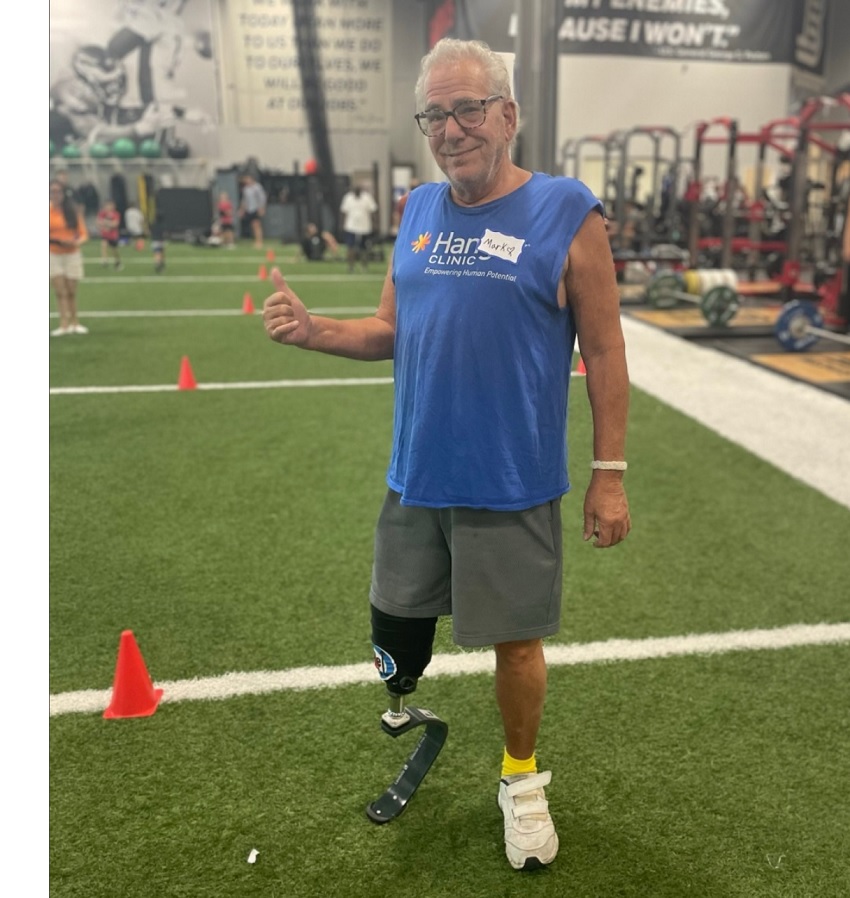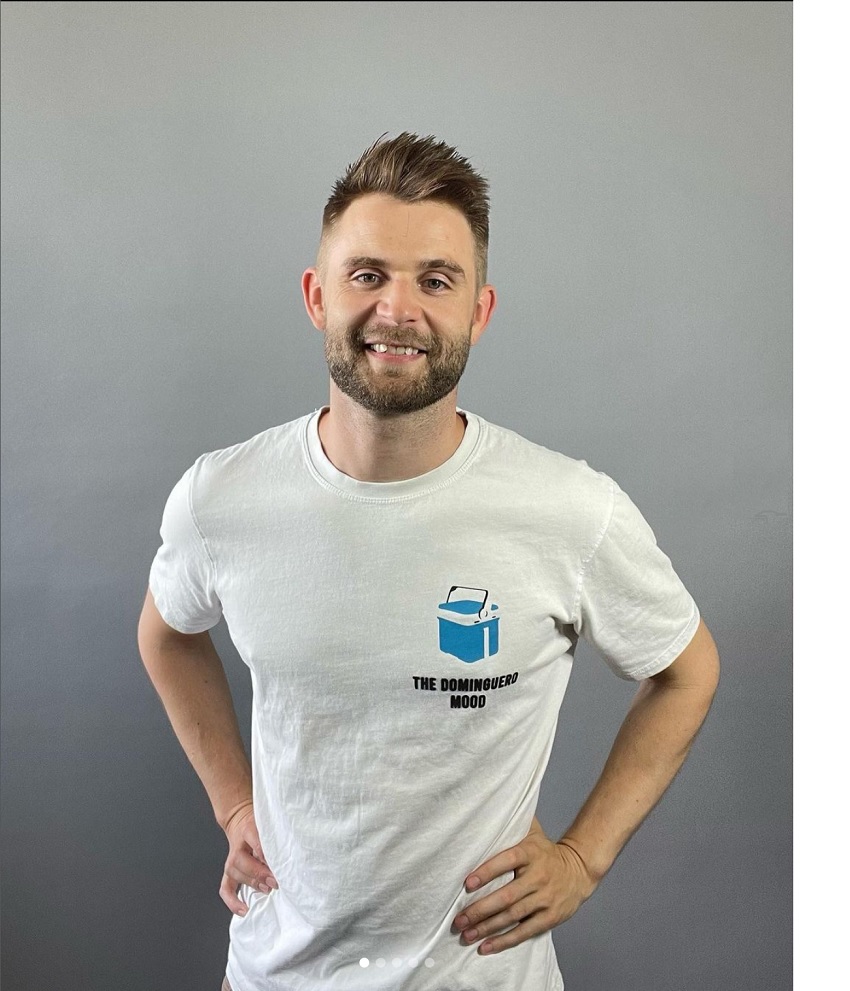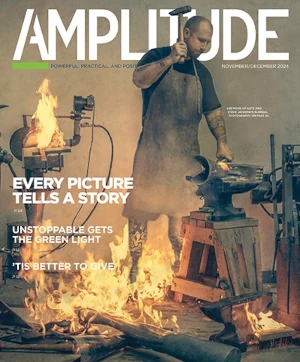In our September/October issue, which comes out next week, we take a look at the growing market for direct-to-consumer prosthetic devices. The sector began with two companies—Unlimited Tomorrow and Open Bionics—that sell affordable, accessible prosthetic arms. They’ve now been joined by Levitate, the first direct-to-consumer manufacturer of lower-limb devices. The Danish company specializes in running blades, which typically cost $20,000 and up—but which you can acquire from Levitate for just $2,000. That’s not exactly cheap for a lot of amputees, but it’s not prohibitively expensive either. In a marketplace where only a tiny minority of consumers can afford the equipment they need to stay fit, active, and healthy, the Levitate blade is a welcome addition.
The company’s founder, Lasse Madsen, lost his right leg above the knee as a teenager 20 years ago. Running blades were brand-new technology back then, and almost impossible to get, so Madsen had to make do with a makeshift device that his prosthetist cobbled together from spare parts. A few years ago, frustrated by the barriers to acquiring a decent running blade, Madsen—by then a 10-year veteran of the engineering industry—decided to create one himself. And so Levitate was born.
You can learn more about the company next week, when our new issue drops. Here we’ve excerpted some of our interview with Madsen, which took place earlier this summer during one of his visits to the United States. You can learn more about Levitate’s products at their website or on Instagram @levitate.sport.
How did you wind up becoming an adaptive sports entrepreneur?
I’ve been kind of what I call an everyday athlete. Competitive sports was not for me, but I have always liked going into the gym, bicycling, and stuff like that. When I was in engineering I had 200 travel days a year at some points, and I didn’t have any time for sports. But when I quit my job, I started having more time for it again. So I went into the basement and I picked up my improvised running prosthetic, and I realized: This is old. Really old. It really didn’t work anymore. It was too soft, and I had gained a lot of weight. So I reached out on Instagram and asked, “Hey, I would like a sports prosthesis. How do I get one?” And the main answer everyone gave me was: “You realize they are not reimbursable, right?”
Good luck coming up with the money, in other words.
Exactly. My account on Instagram at that time had about 250 followers, but most of them were amputees, and some of them did have running blades. So I asked them, “How did you get yours?” People started to tell me about the Challenged Athletes Foundation and a few other nonprofits. And other people told me they had saved up and bought it themselves, which is a lot of money, especially for sports equipment. If you’re a casual athlete and you’re not disabled, you don’t have to spend $15,000 to $20,000 US dollars on sports equipment.
It only costs $800 for a decent bicycle, not $8,000.
Right. Running blades have existed for 25 years. It’s not new technology. So how come it’s not more available to people? Everybody wants to go out and do whatever they want for fun. But when they start to realize all the barriers, they get really frustrated.
Well, I was an engineer. I had been working in the maritime industry for many years, and composites and fiberglass are really big in the maritime industry. So I reached out to the Technical University of Denmark, who has the main research and development facility for Vestas and Siemens. They test their wind turbine blades indoors, in wind tunnels, and the setup they have is just crazy. It’s amazing. They have all the equipment, all the materials, all the test equipment—they have everything. So I reached out to them and said, “I’m an engineer, I’m also an amputee. I would like to do this. Can you help me?” There was a guy who agreed to start working on it. Two months later, we had the first working prototype.

That seems like a pretty fast timeline. Did you expect the design process to take longer?
The original idea was to start out making it in fiberglass, because it’s a cheaper material, and then eventually go to carbon fiber. I had three or four fiberglass prototypes, and I started to give them to other amputees in Copenhagen. One of them was this guy called Anton, and he’s been running on prosthetic blades for six or seven years. He does distance running, he’s not a sprinter. So he came back to me and said, “This really works for me. The flexibility and durability that this material gives me, it’s just completely different from what I’m used to.” And then other people started giving that feedback. So I talked to the guys at the research development facility—these guys are engineers who know materials down to the nano level—and they said, “Fiberglass can bend two and a half, three times more than carbon fiber without breaking.”
I knew that it weighed a few hundred grams more [than a carbon-fiber blade], but I’m an everyday athlete. I’m not focused on sprinting, not focused on long jump, any of that. So once I started getting the feedback from the initial test users, I figured, “Let’s just stay on fiberglass because they are saying that it’s better for them.”
So just to make sure I understand: Carbon fiber is lighter and stiffer, so if you’re a serious competitor who’s measuring performance in hundredths of a second or fractions of a centimeter, then that really makes a difference. But if you just want to enjoy yourself, those fractional performance intervals are meaningless.
Yeah. Then you actually gain some benefits by being on fiberglass. The benefits are more flexibility, greater durability, and it’s also cheaper. And when we compare the weight of our product now to the weight on competing products, it’s within 10 percent. The first prototype was big and clunky, but we spent a year and half refining, tuning, and testing. And now we are actually at a level where it’s it’s an easy tradeoff to make for the average person. You’re giving up a small amount in performance, but the cost is a lot less.
Did you know from the start that you wanted to sell directly to consumers? How did you decide to take that approach?
I just felt that if the insurance companies are treating a running blade as sports equipment, and that’s the reason they don’t reimburse it—well, then let’s treat it as sports equipment, Let’s put it in a nice box that looks like a running-shoe box. And just as anyone can go online and buy new running shoes, an amputee should be able to go online and buy a new running leg. You watch a video, you put it together, you go out and try it, and then tweak a little bit here or a little bit there—like you would do with your bicycle, where you might adjust the height of the seat. I just took that exact concept. I think sports equipment for people with disabilities should be the same as it is for everyone else.
The direct-to-consumer model has brought a fair amount of pushback from some people in the US prosthetic industry. Have you run into that at all?
We’re going through a trust journey. At first we had people telling us they took their Levitate blade to their prosthetist, and [the prosthetist] said, “This is something online, you shouldn’t have bought it.” But now we don’t hear that as much anymore. I think 95 percent of all prosthetists really want to help, and they will find a solution for you if it’s in your best interest.
Something else we have learned is that there are very few prosthetists that actually know how to fit a running blade well. We have quite a few examples of people who buy a Levitate blade, bring it to their prosthetist, and then contact me one or two days later and say, “This doesn’t feel right.” What happens is that some prosthetists are aligning the toe to where the toe for a regular [walking] prosthetic toe would be. So that will cause the person to fall backwards with a running blade. I’ve seen that several times.
When I buy something new, I never look at the instruction manuals. I guess a lot of prosthetists do exactly the same. They’ve been doing this for so many years, they just take it out of the box and they just assume they know how to do it, even if they’ve only fit two or three running blades for their entire career. That’s one of the reasons we decided to make instructional videos. We have installation manuals and stuff like that, but when I look at the count on how many have opened those files and actually read them, it’s close to zero. A lot more watch the video, and we can actually see which part of the video people spend the most time watching. So then we can make a better video explaining that part of the process.
If Levitate is successful with a direct-to-consumer model, do you think it could become a more common option in other parts of the prosthetics industry, outside of sports prosthetics?
I’m trying to build a future where I have an option as an individual to choose something myself and not have to rely on other people. We’re asking people to be advocates for their own health and choose what’s best for them. And I think that’s really, really important. There are all of these things you have no control over, where someone else is making the decision that affects whether you can run, or whether you can walk up a flight of stairs. I see it within Denmark, just within a country of 5 million people, where if you live in a bad municipality or if you get sick and fall out of the labor market, you have fewer options to get a prosthesis. That scares me. I don’t want that decision to depend on whether they decide to cut healthcare spending in Denmark. I want to be able to make the decision for myself.





